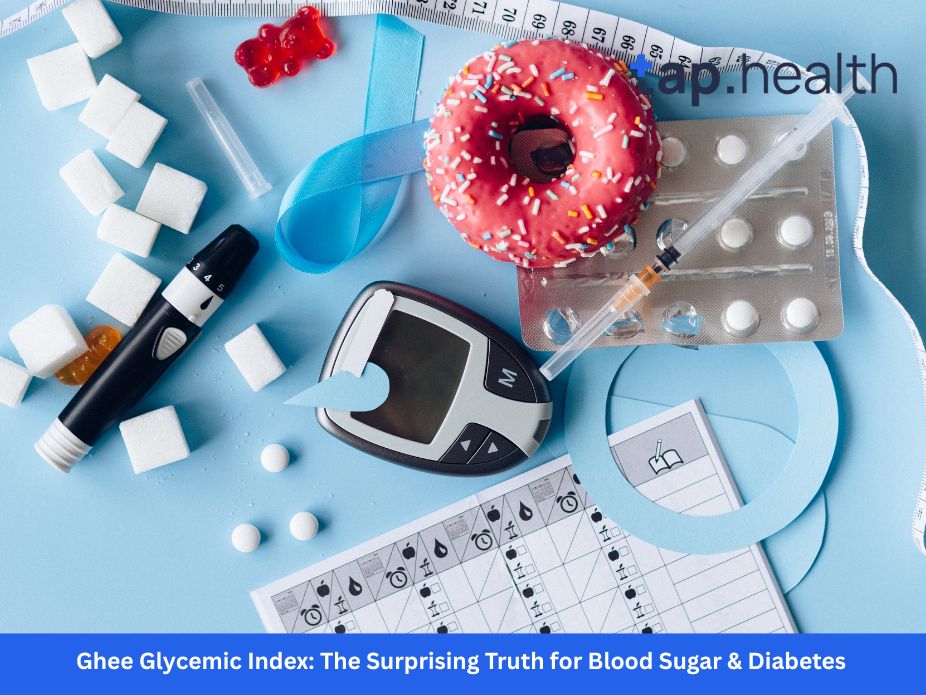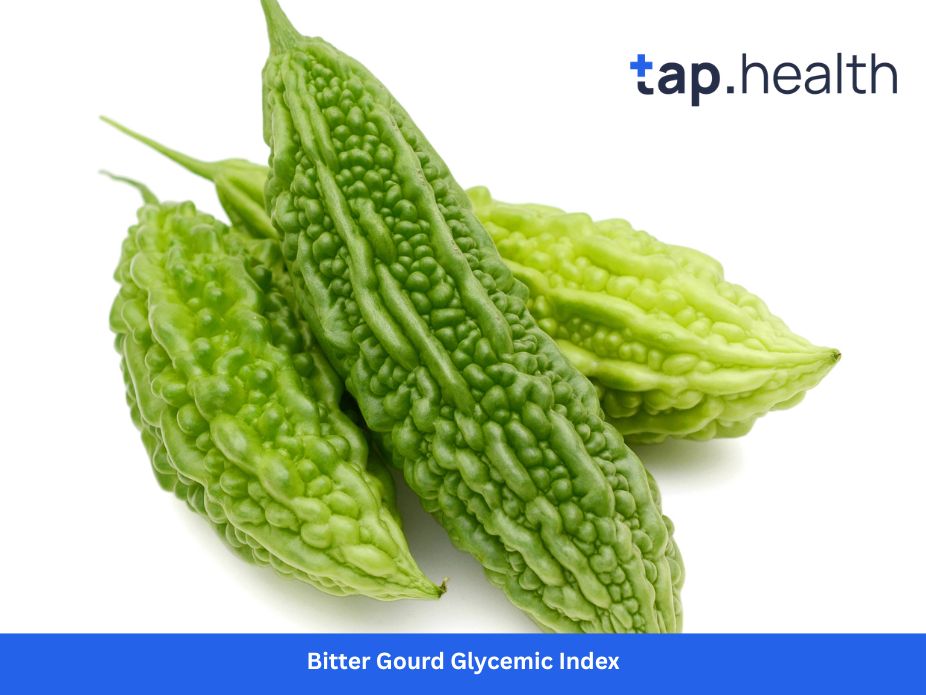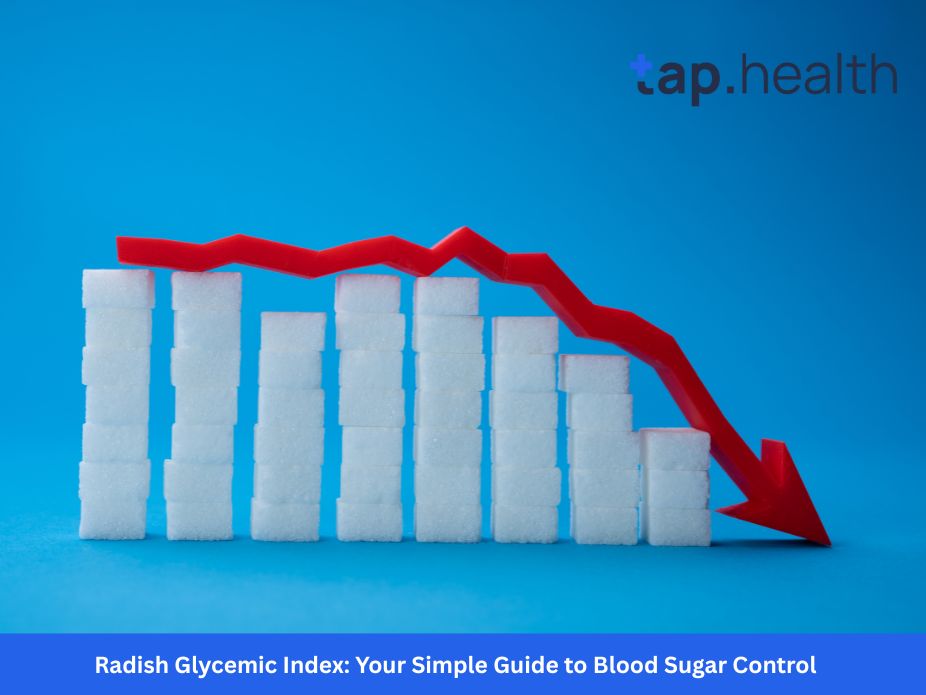Let’s start with a simple question. What happens in your body after you eat a spoonful of sugar?
You can almost feel it, right? A quick burst of energy, followed by a slump that leaves you tired and craving more.
Now, what happens after you eat a teaspoon of ghee?
Nothing. No rush, no crash. Just a rich, buttery flavor.
This daily experience holds the key to one of the most common questions in modern nutrition: What is the glycemic index of ghee?
If you’re managing diabetes, trying to lose weight, or just making smarter food choices, you’ve probably heard about the Glycemic Index (GI). It can feel confusing. But when it comes to ghee, the answer is beautifully simple.
In this article, we will clear all the confusion. We’ll explain what GI means, reveal the definitive number for ghee, and show you how this golden fat can be a powerful friend to your health. Get ready to see your favorite desi superfood in a whole new light.
What is the Glycemic Index? The “Speedometer” for Carbs
Before we talk about ghee, we need to understand the tool we’re using to measure it.
The Glycemic Index (GI) isn’t a measure of how “fattening” a food is. It’s not about calories. Instead, think of it as a speedometer for carbohydrates.
It’s a scale from 0 to 100 that measures how fast and how high a carbohydrate-containing food can raise your blood sugar levels.
Here’s the simple breakdown:
- Low GI (55 or less): The Slow Lanes. These foods break down slowly, providing a steady, gentle release of sugar into your bloodstream. This keeps you full and energized for longer. Examples: apples, lentils, whole oats.
- Medium GI (56 to 69): The Moderate Lanes.
- High GI (70 and above): The Fast Lanes. These foods are like sugar rockets. They break down incredibly fast, causing a rapid spike in blood sugar. This is often followed by a sharp crash, leaving you tired, irritable, and hungry. Examples: white bread, sugary soda, potatoes.
The GI is a crucial tool, especially for people with diabetes. But it has one critical limitation that changes everything when we talk about ghee.
The Golden Answer: What is the Glycemic Index of Ghee?
Here is the straightforward, scientific fact:
Ghee has a glycemic index of zero.
That’s right. Zero.
Why is the number zero? Because the Glycemic Index only measures the impact of carbohydrates on blood sugar.
Let’s break that down. Food is made up of three main components, called macronutrients:
- Carbohydrates (which break down into sugar)
- Proteins
- Fats
Ghee is almost 100% pure fat. It contains virtually no carbohydrates or protein. Since there are no carbs to break down into sugar, ghee has no measurable effect on your blood glucose levels when you eat it by itself.
Eating a spoon of ghee is not like eating a spoon of sugar. It’s metabolized in a completely different way, primarily for sustained energy, not for a quick sugar rush.
Ghee vs. Other Foods: A GI Comparison
To understand what “zero” really means, let’s look at it in context.
- Ghee (GI = 0) vs. White Sugar (GI = 65): Sugar is a pure carbohydrate, so it has a high GI.
- Ghee (GI = 0) vs. Whole Wheat Bread (GI = 74): Bread is full of carbs, hence the high GI.
- Ghee (GI = 0) vs. Butter (GI = 0): Like ghee, butter is also mostly fat and has a GI of zero.
- Ghee (GI = 0) vs. Olive Oil (GI = 0): All pure fats and oils have a glycemic index of zero.
This makes ghee a safe and excellent choice for anyone needing to keep their blood sugar stable.
But Wait! How Ghee Affects Blood Sugar in Real Meals
This is where the story gets even more interesting. While ghee alone doesn’t raise blood sugar, what it does when paired with other foods is its real superpower.
You don’t typically eat ghee by the spoonful (unless it’s in your kadha!). You cook with it. You add it to your roti or your dal. And in this role, ghee becomes a blood sugar manager.
The “Slow-Down” Effect: Ghee’s Real Magic
When you add ghee to a high-carbohydrate food, something wonderful happens.
The fat in the ghee slows down the digestion process. It acts like a speed bump in your digestive system. The carbohydrates from your meal take much longer to break down and enter your bloodstream.
So, that rapid sugar spike you might have gotten from a plain roti or a bowl of rice? Ghee helps flatten that curve.
Example: A plain whole-wheat chapati might have a medium GI. But when you eat it with a spoonful of ghee, the fat slows the digestion of the chapati’s carbs, effectively lowering its overall glycemic impact.
Ghee and Diabetes: A Friend, Not a Foe
Given this “slow-down” effect, is ghee good for diabetics?
Yes, when used in moderation, ghee can be a beneficial part of a diabetic diet.
Here’s why:
- Promotes Satiety: Fat is very satisfying. Adding ghee to a meal helps you feel full and prevents overeating and unhealthy snacking later.
- Prevents Spikes: By slowing down carb digestion, it helps maintain stable blood glucose levels after a meal.
- Provides Stable Energy: Unlike carbs, fat provides a long-lasting source of energy without the rollercoaster effect.
The key, as with any calorie-dense food, is portion control.
Beyond Blood Sugar: The Nutritional Benefits of Ghee
Ghee’s benefits go far beyond its zero glycemic index. This is why it’s been revered in Ayurveda for thousands of years.
Rich in Healthy Fats
Ghee is primarily composed of saturated fats, but it also contains:
- Medium-Chain Triglycerides (MCTs): These are healthy fats that are easily absorbed and used by the body for immediate energy, rather than being stored as fat.
- Conjugated Linoleic Acid (CLA): Some studies suggest that CLA, found in ghee made from grass-fed cow’s milk, may have anti-inflammatory properties and support weight management.
A Powerhouse of Fat-Soluble Vitamins
Ghee is an excellent source of vitamins that need fat to be absorbed by our bodies:
- Vitamin A: Crucial for vision, immune function, and skin health.
- Vitamin E: A powerful antioxidant that protects our cells from damage.
- Vitamin K2: Plays a vital role in bone health and directing calcium to the bones and teeth, instead of the arteries.
It’s Lactose and Casein Free
The process of making ghee involves simmering butter, which removes the milk solids (lactose and casein). This makes it a safe option for many people who are lactose intolerant or sensitive to dairy proteins.
Supports Digestive Health
In Ayurveda, ghee is believed to kindle the digestive fire (Agni). The butyric acid in ghee, a short-chain fatty acid, is known to support the health of the intestinal lining and reduce inflammation in the gut.
How to Use Ghee Wisely in Your Diet
Knowing that ghee has a GI of zero doesn’t mean you should start drinking it by the cup! It is still a calorie-dense food. The magic is in using it smartly.
The Golden Rule: Moderation
A little ghee goes a long way. For most people, 1 to 2 teaspoons per day is a healthy and sustainable amount. You can use it for:
- Cooking: Its high smoke point makes it perfect for sautéing and tadkas.
- Spreading: A light smear on your roti or toast.
- Adding to Meals: A spoonful mixed into hot dal or rice.
Smart Pairings for Blood Sugar Control
Use ghee strategically with medium or high GI foods to create a balanced, low-glycemic meal.
- Drizzle ghee on your quinoa or millet.
- Add it to your vegetable stir-fry.
- Use it to cook your morning eggs.
- Mix it into your pre-workout oatmeal for sustained energy.
What to Avoid
- Avoid Overheating: While ghee has a high smoke point, don’t let it burn and smoke, as this can damage the beneficial compounds.
- Don’t Pair with Junk Food: Adding ghee to already unhealthy, processed food doesn’t make it healthy. The principle works best with whole, nutritious foods.
The Final Verdict: Is Ghee a Superfood for Blood Sugar?
So, what’s the bottom line on the glycemic index of ghee?
Ghee is a unique food with a glycemic index of zero. It does not raise blood sugar on its own and can actually help lower the glycemic impact of the other foods you eat with it.
For people with diabetes, weight watchers, and anyone looking for stable energy, ghee is not the enemy it was once made out to be. It is a nutrient-dense, traditional fat that can be a valuable part of a balanced diet.
Embrace the ghee. Use it wisely, respect its potency, and enjoy the rich, stable health it can help you build.
Frequently Asked Questions (FAQs) on Ghee Glycemic Index
Q1: Can a diabetic patient eat ghee every day?
A: Yes, a diabetic patient can consume 1-2 teaspoons of ghee daily as part of a balanced diet. Its ability to slow down carbohydrate digestion can help prevent blood sugar spikes. However, because it is high in calories, it’s important to stay within this recommended portion and account for it in your overall daily calorie intake.
Q2: Does ghee increase insulin levels?
A: No, ghee does not cause a spike in insulin. Insulin is released in response to rising blood sugar. Since ghee has no carbs and doesn’t raise blood sugar, it does not trigger a significant insulin response. Some studies even suggest the fats in ghee can improve insulin sensitivity over time.
Q3: Is ghee good for weight loss?
A: Yes, in moderation, ghee can support weight loss. The healthy fats promote a feeling of fullness (satiety), which can prevent overeating. The MCTs in ghee are also used for energy rather than being stored as fat. But remember, it is calorie-dense, so portion control is key.
Q4: What is the glycemic index of ghee with roti?
A: The roti itself has a glycemic index (whole wheat is around 50-60). When you add ghee to the roti, the fat slows down the digestion of the roti’s carbohydrates. This effectively lowers the overall glycemic response of the meal compared to eating a plain roti without ghee.
Q5: Which is better for diabetics: butter or ghee?
A: For diabetics, ghee often has a slight edge. Both have a GI of zero, but ghee is free of lactose and casein, making it easier to digest for many. Ghee also has a higher concentration of butyric acid and a higher smoke point, making it more stable for cooking.
Q6: How much ghee per day is safe?
A: For a healthy adult, 2-3 teaspoons per day is generally considered a safe and beneficial amount. It’s always best to consult with a doctor or nutritionist for personalized advice, especially if you have specific health conditions.
Q7: Does ghee cause cholesterol problems?
A: This is a complex topic. While ghee contains saturated fat, recent research suggests that moderate consumption of high-quality ghee as part of a balanced diet does not significantly increase the risk of heart disease and may even improve lipid profiles by raising good (HDL) cholesterol. However, people with existing high cholesterol should consume it in strict moderation and under medical guidance.



